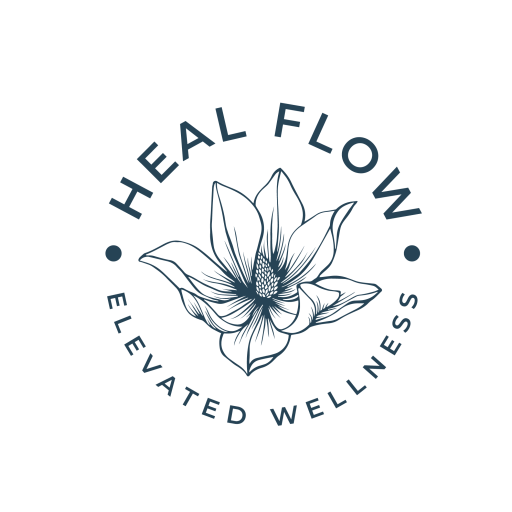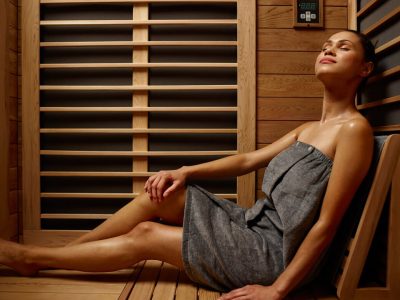Gastroesophageal Reflux Disease, commonly known as GERD, affects between 18.1 – 27.8% of the population in North America (GERD). It is a condition characterized by frequent heartburn, chest pain, and abdominal discomfort due to the backflow of stomach acid into the esophagus. While over-the-counter medications like antacid (e.g., Tums) or H2 blockers (e.g., Pepcid AC) provide relief, holistic alternatives like acupuncture are becoming increasingly popular for managing GERD symptoms naturally.
What is GERD?
GERD is a chronic digestive disorder where the lower esophageal sphincter fails to close properly, allowing stomach acid to flow back into the esophagus. This condition leads to uncomfortable symptoms such as burning sensations in the chest (heartburn), regurgitation, difficulty swallowing, and in severe cases, even chronic cough and hoarseness. Over time, untreated GERD can cause complications, including esophagitis (an inflammation of the esophagus) and an increased risk of esophageal cancer (Johns Hopkins Medicine).
How can Acupuncture help?
Acupuncture is an ancient practice rooted in Traditional Chinese Medicine (TCM) and is increasingly recognized for its potential to alleviate GERD symptoms. A growing body of research supports acupuncture’s effectiveness in managing acid reflux. For instance, a study published in the Journal of Neurogastroenterology and Motility found that acupuncture significantly reduced reflux symptoms and improved esophageal motility in GERD patients(Acupuncture).
Acupuncture works by stimulating specific points in the body, known as acupoints, which help regulate the digestive system, improve the function of the lower esophageal sphincter, and reduce inflammation. This not only addresses the root cause of GERD but also promotes overall well-being by balancing the body’s energy flow (Qi).
The key to acupuncture’s effectiveness lies in its ability to balance the autonomic nervous system and enhance the body’s natural healing mechanisms. Specific acupuncture points, such as CV12, ST36, and PC6, are commonly used to relieve GERD symptoms. These points help regulate stomach acid production, improve digestion, and reduce stress, which is often a major contributor to GERD flare-ups (GERD).
Acupuncture also improves circulation, reduces abdominal discomfort, and enhances the functioning of the lower esophageal sphincter, preventing stomach acid from flowing back into the esophagus. The treatment is non-invasive and can be customized to each individual’s symptoms and overall health.
Combining Acupuncture with Lifestyle Changes
While acupuncture offers substantial relief for GERD, combining it with lifestyle changes can maximize its effectiveness. Patients are encouraged to adopt habits that support digestive health, such as:
- Avoiding Trigger Foods: Spicy, acidic, and fatty foods often exacerbate GERD symptoms. Reducing or eliminating these foods can prevent flare-ups.
- Eating Smaller Meals: Overeating can increase pressure on the lower esophageal sphincter, leading to acid reflux. Eating smaller, more frequent meals can help manage symptoms.
- Maintaining a Healthy Weight: Obesity is a significant risk factor for GERD, as excess weight puts pressure on the abdomen, pushing stomach contents into the esophagus.
- Avoiding Lying Down After Meals: Staying upright after eating allows gravity to help keep stomach acid in the stomach. It’s recommended to wait at least 2-3 hours after a meal before lying down.
For individuals seeking a natural alternative or complementary treatment for GERD and acid reflux, acupuncture offers a safe and effective solution. By targeting the underlying causes of GERD, acupuncture can reduce symptoms, improve overall digestive health, and enhance the quality of life for those struggling with chronic acid reflux. As with any treatment, it’s essential to consult with a healthcare provider to determine the best approach for your unique health needs.
- BioFlex Cold Laser Therapy For Post-Chemotherapy Radiation Burns
Radiation therapy is a critical component of cancer treatment, but it can leave behind painful side effects, particularly radiation burns. These burns can range from mild redness and irritation to more severe blistering and peeling. For patients undergoing post-chemotherapy radiation therapy, managing these burns is crucial for maintaining quality of life during recovery. BioFlex, a non-invasive cold laser therapy, offers a promising solution for healing radiation burns and promoting skin regeneration without additional side effects.
How BioFlex (Cold Laser Therapy) Work
BioFlex, also known as low-level laser therapy (LLLT), uses targeted light energy to stimulate cellular repair and accelerate tissue regeneration. Unlike traditional lasers, which generate heat, cold lasers operate at lower frequencies, delivering energy that penetrates deep into the skin without causing thermal damage. This stimulates the body’s natural healing processes by increasing blood flow, reducing inflammation, and enhancing collagen production, which are all critical for repairing damaged skin.
Several clinical studies have highlighted the effectiveness of cold laser therapy in treating radiation burns. Research published in the Biomed Central found that cold laser therapy significantly improved wound healing and reduced pain in cancer patients with radiation burns (Low level laser therapy). In addition, BioFlex systems are widely recognized for their safety and efficacy, with numerous patients reporting substantial improvements in skin health and comfort after using cold laser therapy as part of their post-cancer treatment regimen.
Bioflex infrared light therapy works by stimulating cellular processes that are essential for healing. Here’s how it can help with radiation burns:
- Promoting Cellular Repair: The infrared light from Bioflex therapy penetrates the skin and reaches the damaged cells. It enhances cellular metabolism and promotes the production of ATP (adenosine triphosphate), which is crucial for energy and repair processes within cells.
- Reducing Inflammation: Radiation burns often lead to significant inflammation. Bioflex therapy helps reduce this inflammation by modulating the release of pro-inflammatory cytokines and encouraging anti-inflammatory responses, which can alleviate pain and discomfort.
- Enhancing Collagen Production: Collagen is vital for skin repair. Bioflex therapy stimulates collagen synthesis, which helps in the regeneration of healthy skin tissues and the healing of wounds.
- Alleviating Pain: The therapy has analgesic effects that can help reduce the pain associated with radiation burns, making it easier for individuals to manage their symptoms and improve their quality of life.
Integrating BioFlex Therapy Into Your Recovery Plan
BioFlex cold laser therapy can be seamlessly integrated into a patient’s post-chemotherapy recovery plan. It complements other treatments such as topical ointments and wound care, offering a comprehensive approach to managing radiation burns. Patients typically require multiple sessions, depending on the severity of their burns, but many experience relief after just a few treatments.



